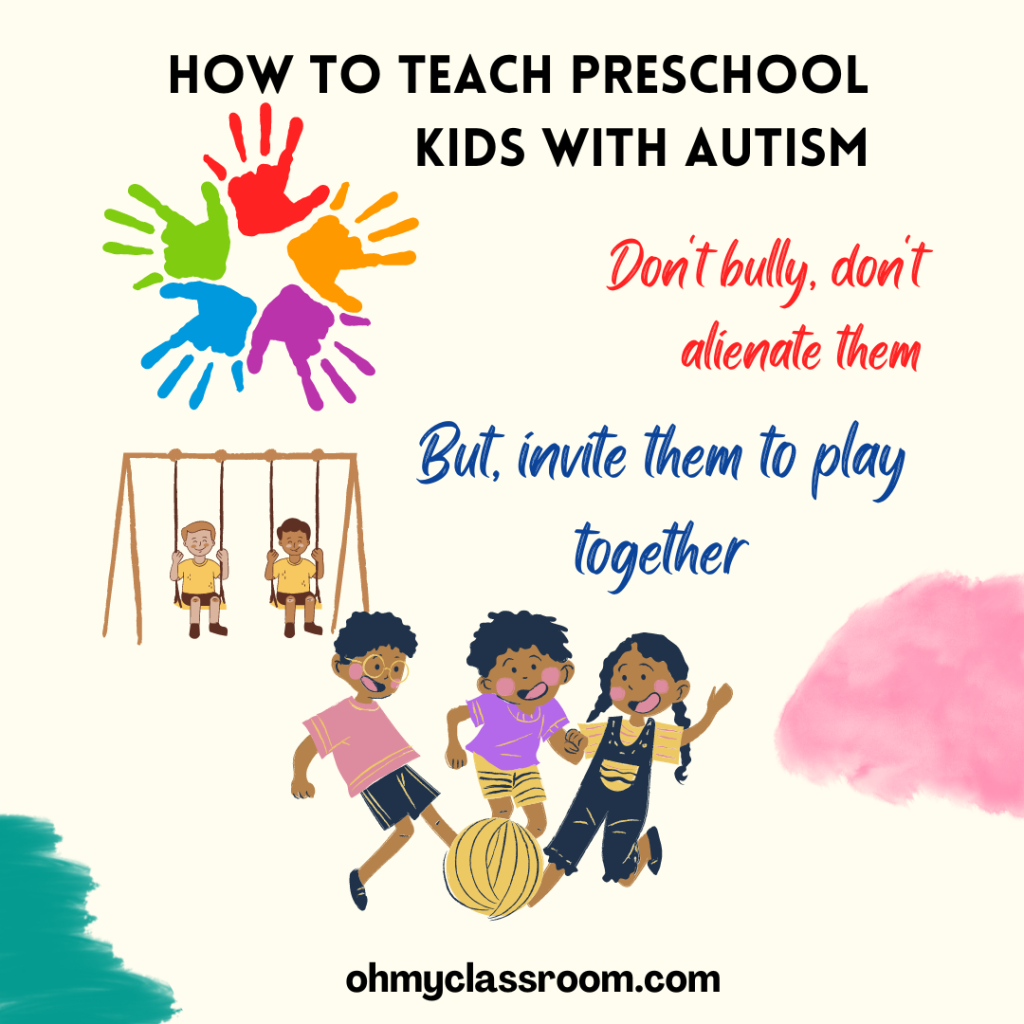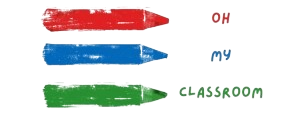Teaching preschoolers with autism can be a challenging task for educators and parents alike.
Autism Spectrum Disorder (ASD) is a neuro-developmental disorder that affects communication, social interaction, and behavior.
It is estimated that approximately 1 in 54 children in the United States have ASD, and early intervention is critical for improving outcomes for these children.
In this blog post, we will discuss strategies on how to teach preschoolers with autism, including the importance of early intervention, individualized instruction, and sensory integration.

Related: Can a Teacher Diagnose Autism?
Teaching Preschoolers with Autism
Early Intervention
Early intervention is crucial for children with autism. Research has shown that children who receive early intervention services have better outcomes than those who do not.
Early intervention typically begins in the preschool years, and may involve speech and language therapy, occupational therapy, behavioral therapy, and other interventions.
One of the most effective early intervention programs for children with autism is Applied Behavior Analysis (ABA).
ABA is a scientific approach to understanding behavior, and it has been shown to be effective in improving communication, social interaction, and behavior in children with autism.
ABA programs typically involve individualized instruction, positive reinforcement, and data collection to monitor progress.
Related: 20 Snowflake Craft Activities for Preschool Kids
Individualized Instruction
Individualized instruction is critical for teaching preschoolers with autism. Every child with autism is unique, and it is important to tailor instruction to meet the individual needs of each child.
This may involve using visual supports, incorporating the child’s interests into instruction, and breaking tasks down into smaller, more manageable steps.
Visual supports can be particularly helpful for children with autism. Visual supports can include pictures, symbols, or written words that help the child understand what is expected of them.
Visual supports can be used to help the child understand routines, expectations, and social situations.
Incorporating the child’s interests into instruction can also be effective. Many children with autism have specific interests, such as trains or dinosaurs.
By incorporating these interests into instruction, educators can engage the child and make learning more meaningful.
Breaking tasks down into smaller, more manageable steps can also be helpful. Many children with autism struggle with executive functioning, which can make it difficult for them to plan and organize their thoughts.
By breaking tasks down into smaller steps, educators can help the child understand what is expected of them and make progress more manageable.
Related: 20 Best Pre-Writing Activities for Preschoolers
Sensory Integration
Sensory integration is another important aspect of teaching preschoolers with autism. Many children with autism have sensory processing difficulties, which can impact their ability to learn and interact with their environment.
Sensory processing difficulties can manifest in a variety of ways, including overreacting or under-reacting to sensory stimuli, seeking out sensory stimulation, or avoiding sensory stimulation.
Related: 25 Sensory Table Activities for 1-2 year Olds
To address sensory processing difficulties, educators can provide sensory input that is calming or alerting to the child.
This may involve using sensory tools, such as fidget toys or weighted blankets, or incorporating sensory activities, such as swinging or jumping, into instruction.
It is also important to be mindful of the sensory environment in which instruction takes place. For example, bright lights or loud noises may be overwhelming for some children with autism.
By creating a sensory-friendly environment, educators can help the child feel more comfortable and engaged in learning.
Activities for 3 year Old Autistic Child
When it comes to planning activities for a 3-year-old child with autism, it is important to keep in mind that every child with autism is unique and may have different needs and interests.
However, there are several activities that have been shown to be effective in promoting social, emotional, cognitive, and physical development in young children with autism.
Sensory Play:
Sensory play is a great way to engage children with autism and promote their sensory processing skills. Sensory play can involve a variety of materials such as sand, water, shaving cream, playdough, or sensory bins.
It is important to create a safe and structured environment for sensory play and supervise the child at all times. Sensory play can also help children with autism develop fine motor skills and explore new textures and materials.
Pretend Play:
Pretend play is an effective way to encourage social skills, language development, and imagination in young children with autism.
Pretend play can involve setting up a pretend kitchen, grocery store, or doctor’s office. It is important to provide the child with clear instructions and visual aids to support their understanding of the activity.
Music Therapy:
Music therapy has been shown to be effective in improving social skills, communication, and emotional regulation in children with autism. Music therapy can involve singing, playing instruments, or listening to music.
It is important to choose music that is calming and not overstimulating for the child. Music therapy can also be a fun and engaging way to encourage physical activity and coordination.
Arts and Crafts:
Arts and crafts activities can help children with autism develop their fine motor skills, creativity, and self-expression.
Arts and crafts activities can involve drawing, painting, or making collages. It is important to provide the child with clear instructions and visual aids to support their understanding of the activity.
Outdoor Play:
Outdoor play is an effective way to encourage physical activity, gross motor development, and social skills in children with autism. Outdoor play can involve playing with balls, riding a tricycle, or playing on a playground.
It is important to supervise the child at all times and provide a safe and structured environment for outdoor play.
Related: 25 Indoor and Outdoor Group Games for Preschool Kids
Educational Games:
Educational games can be an effective way to promote cognitive development and problem-solving skills in children with autism. Educational games can involve puzzles, memory games, or matching games. It is important to choose games that are age-appropriate and not too difficult for the child.
Story Time:
Story time is an effective way to promote language development and imagination in young children with autism. It is important to choose books that are age-appropriate and have clear pictures and simple language.
It is also important to engage the child by asking questions and encouraging them to participate in the story.
Conclusion
Teaching preschoolers with autism can be a challenging but rewarding task. By providing early intervention, individualized instruction, and sensory integration, educators and parents can help children with autism improve their communication, social interaction, and behavior.
It is important to remember that every child with autism is unique, and it may take some trial and error to find the strategies that work best for each individual child.
With patience, creativity, and a willingness to try new things, educators and parents can help preschoolers with autism reach their full potential.
References
- Odom, S. L., Collet-Klingenberg, L., Rogers, S. J., & Hatton, D. D. (2010). Evidence-based practices in interventions for children and youth with autism spectrum disorders. Preventing School Failure: Alternative Education for Children and Youth, 54(4), 275-282.
- Koegel, R. L., Koegel, L. K., Ashbaugh, K., & Bradshaw, J. (2014). The importance of early identification and intervention for children with or at risk for autism spectrum disorders. International Journal of Speech-Language Pathology, 16(1), 50-56.
- Rogers, S. J. (2009). What are infant siblings teaching us about autism in infancy?. Autism Research, 2(3), 125-137.
- Childbirth Injuries. Co-occurring Conditions in Cerebral Palsy. Retrieved June 22, 2023, from Childbirth Injuries website: https://www.childbirthinjuries.com/cerebral-palsy/co-occurring-conditions/ by Merrisa Sanford-Patterson (Patient help Advocate).


